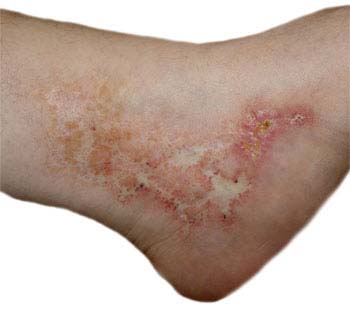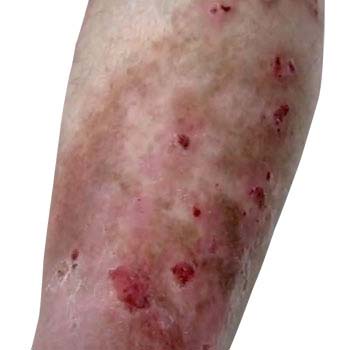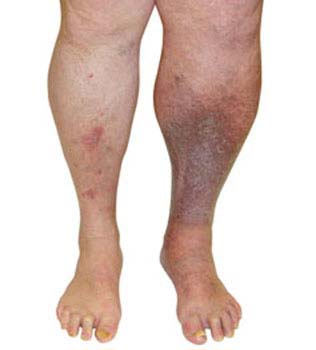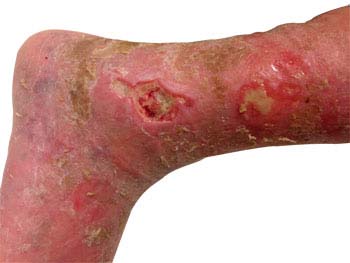Certain complicating ailments tend to be seen if adequate care is not taken.
- Inflammation: of the veins i.e. thrombophlebitis, causing swelling in the feet and ankles.
- Blood Clots: When the inflammation starts affecting the deeper veins of the legs there could be sudden swelling in the legs. And this should be considered seriously as it may indicate a blood clot.
-
Skin Changes: Skin over the affected area just above the tortuous vein shows certain changes which are:
- Inflammation, dryness and thinning of the skin.
- Discolouration: Sometimes there could be a brownish/blackish discolouration of the skin.

- Atrophie Blanche: It is a condition where there are scar-like whitish patches just above the ankles.

- Venous Eczema: In this, the skin becomes thin, brown, with some skin lesions. There are red spots, itching, dark skin or thickening of the skin at the ankles or legs.

- Lipodermatosclerosis: It is a condition in which there is an inflammation of the fat tissues under the skin. The lower extremities taper till the ankles and form a constricting band giving it an appearance of an inverted bottle.

- Venous Ulcers: Venous ulcers occur due to increased pressure of the blood in the veins of the legs. This leads to oozing of the fluid out of the veins and under the skin. As a result there is thickening, swelling and damage to the skin. This damaged skin eventually breaks out to be an ulcer.
BE CAREFUL!
The moment you have been diagnosed with a clot in the vein, do get it treated on an emergency basis. This is because clots in veins tend to detach themselves and get lodged in the lung circulation, giving rise to a serious, life-threatening condition called Pulmonary Embolism.















